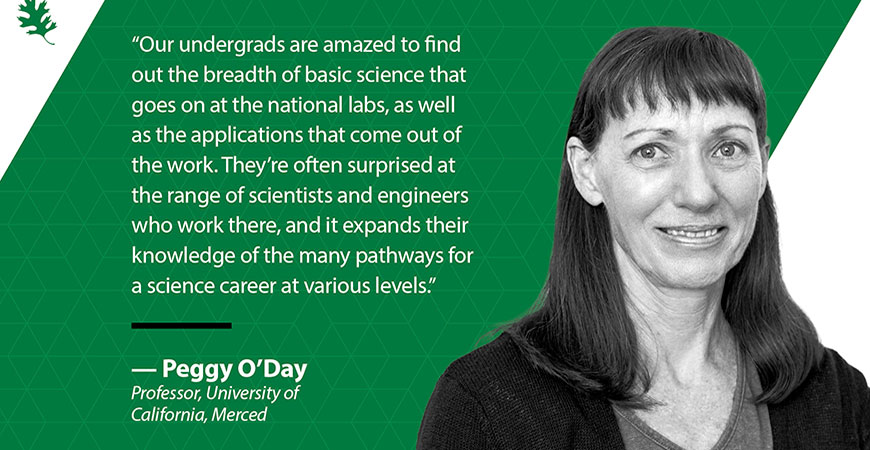
At UC Merced, mercury is a regional challenge that student and faculty researchers have been tackling for several years. Mercury was used to extract gold during the Gold Rush in California, and the element was also mined at the New Almaden site, at one time the second-largest mercury mine in the world near today’s Silicon Valley.
Through the Department of Energy’s (DOE) Office of Environmental Management’s Minority Serving Institution Partnership Program, or MSIPP, UC Merced students and Professor Peggy O’Day are working with Oak Ridge National Laboratory (ORNL), to test mercury remediation technology consisting of activated carbon coated with manganese oxide. The technology seeks to discourage the transformation of mercury into the neurotoxin methylmercury by using manganese to limit methylation.
The absorbent carbon material helps keep mercury in place in soil sediments rather than being flushed into the stream, said O’Day, professor of environmental geochemistry in the Department of Life and Environmental Sciences and the project’s principal investigator (PI).
The partnership is supported by special programs at DOE, including the Office of Science Biological and Environmental Research Program’s Research Development and Partnership Pilot projects, the Office of Science’s Reaching New Energy Sciences Workforce projects, MSIPP and other internships.
Alexander Johs is the ORNL PI for the project, which began in 2018 as the students performed initial lab experiments. Johs recently shipped East Fork Poplar Creek sediments from ORNL to UC Merced for soil column experiments. Both undergraduate and graduate students are expected to visit ORNL and conduct field trials as part of the program.
“Students get an in-depth experience in the program, particularly working with national laboratory facilities,” O’Day said. “Most of our undergrads don’t even know that national labs exist or what they do and who works there. They’re amazed to find out the breadth of basic science that goes on at the national labs, as well as the applications that come out of the work. They’re often surprised at the range of scientists and engineers who work there, and it expands their knowledge of the many pathways for a science career at various levels.”
O’Day said the MSIPP program with ORNL “encourages our students, and especially our minority students, by sending the message that DOE and the national laboratories are places they should be thinking about as career pathways. The idea that they belong at the national labs makes a big impression. I hope that DOE continues to support the program and expands it to even more science areas, because I think it’s having a big impact on students.”
O’Day said ORNL’s well-regarded expertise in mercury led her to pursue collaboration with the lab and MSIPP funding. She said ORNL scientists led the research that identified the genetic underpinnings of how inorganic mercury converts to toxic methylmercury.
“Mercury is a complicated contaminant,” O’Day said. “There’s no off-the-shelf fix. Just like radionuclides, you have to think about context — the form of the contaminant, where it is, what the risk factors are and knowing that you’ll never completely get rid of it. It’s valuable for these students, a mix of environmental scientists and engineers, to realize that complexity.”
Helping resolve the mercury challenge is exciting, Johs said, because of the complexity and urgency of the problem.
“Mercury contamination is a global concern and a long-term issue, as it can remain in the environment for many years, bioaccumulate up trophic levels, enter the food chain and pose a risk to human health. The environmental and human health risks make it essential that we develop effective strategies for remediation.”

